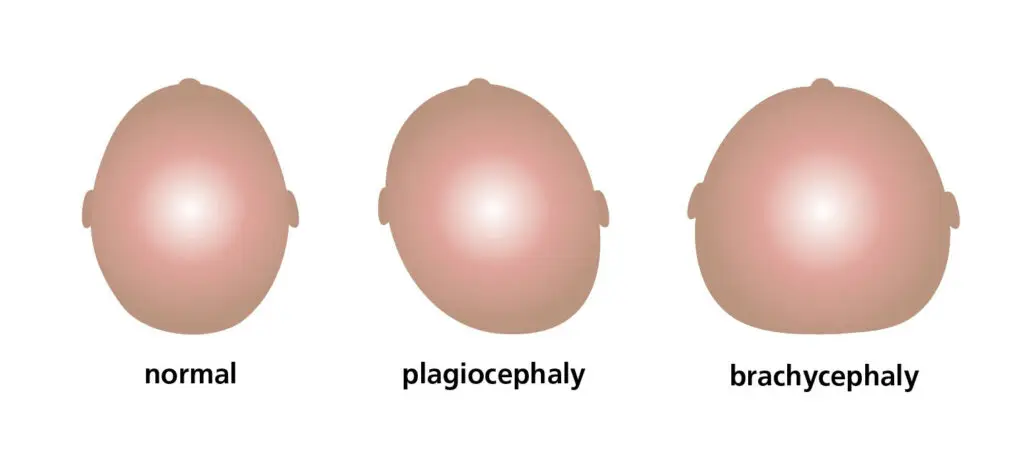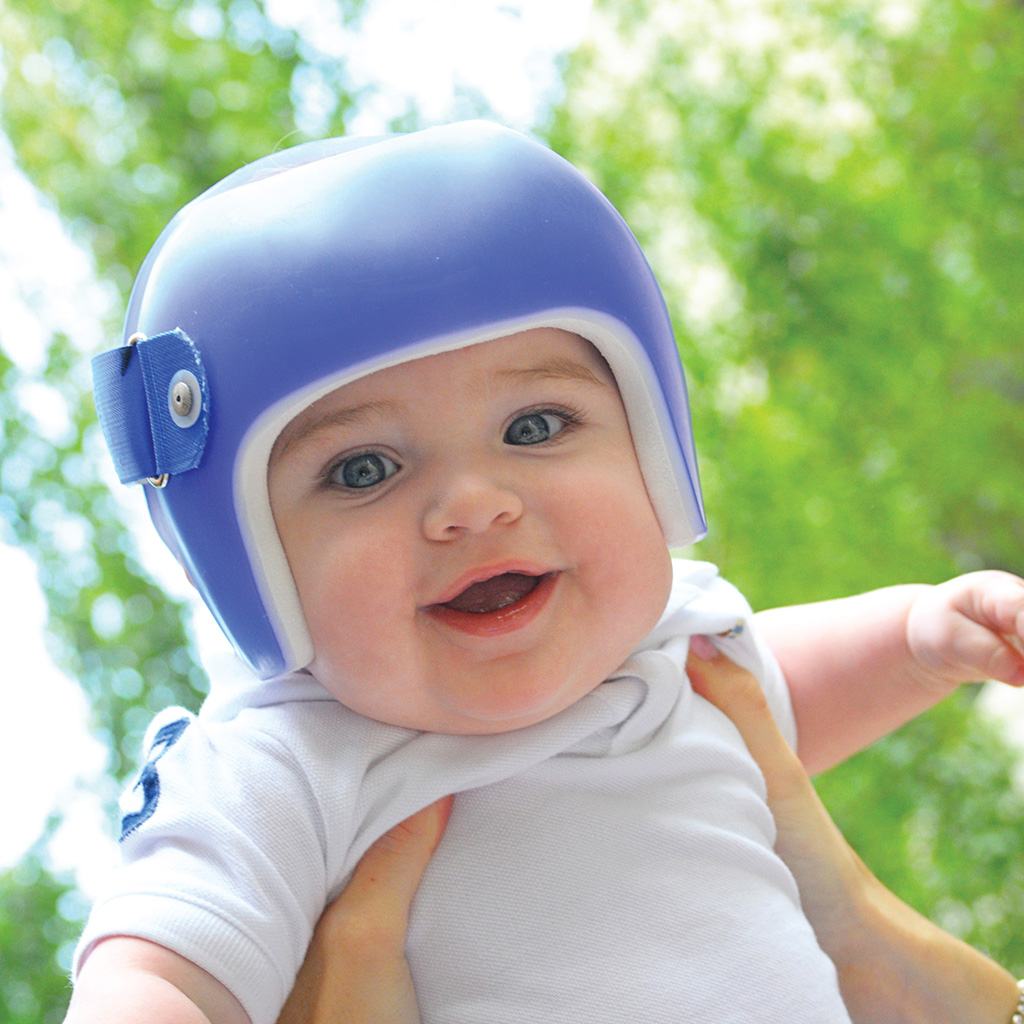#109-1960 Springfield Road Kelowna, BC V1Y 5V7
9:00am-4:00pm (Mon-Thurs)
9:00am-4:00pm (Fri)
Phone Number:
(778) 478-7014
Toll Free:
1-888-913-7919
Positional plagiocephaly, also known as deformational plagiocephaly, is a condition in which an infant’s head develops a flattened shape due to external pressures on the soft, malleable skull. This flattening typically occurs during the first few months of life, often as a result of prolonged pressure from lying in one position. As a result, the head takes on an asymmetrical shape, with one side becoming flatter than the other. While this is the most common form of plagiocephaly, it can also arise from factors such as muscle imbalances in the neck or constraints experienced during pregnancy.
The condition may develop when a baby spends excessive time lying on their back or consistently turns their head to one side while sleeping. Additionally, intrauterine positioning can contribute to skull deformation, particularly in cases of twins competing for space. Although generally not serious, positional plagiocephaly can impact facial symmetry and, if left unaddressed, may lead to developmental concerns as the child grows.
The most visible symptom of plagiocephaly is an uneven head shape, where one side appears flatter than the other. This may cause one ear to be positioned further forward than the other, and the forehead may protrude more prominently on the flattened side. Parents might also notice that their baby tends to tilt or rotate their head to one side, which can affect their ability to interact with their environment. While plagiocephaly is primarily a cosmetic issue, early detection is key to preventing any potential long-term impacts on development.

Treatment for plagiocephaly often includes the use of a CRO or cranial remolding orthosis, commonly referred to as a baby helmet. This custom-made helmet helps gently reshape the infant’s head by redistributing pressure and allowing growth in the flattened areas. The helmet is typically recommended for infants between 5 and 12 months of age, as this is when skull growth is most rapid. In addition to helmet therapy, parents are encouraged to practice repositioning techniques, such as increasing tummy time and alternating the baby’s head position during sleep. Regular follow-ups with a pediatric specialist are essential to monitor progress and make necessary adjustments to the treatment plan, ensuring the best outcomes for the child’s head shape and overall development.
Plagiocephaly or Brachycephaly is considered a relatively common condition and is typically benign. It does not cause developmental or neurological problems in most cases. However, it is important to address the condition to prevent it from worsening and to promote a more symmetrical head shape. Treatment options may include repositioning techniques, supervised tummy time, physical therapy, and, in some cases, specialized helmets called Cranial Remolding Orthoses) to help reshape the head.
Ortho Design’s Certified Orthotists have extensive experience fitting infants with cranial remolding orthoses (CROs). In British Columbia, a CRO must be fitted by a Certified Orthotist and is not recommended before the age of 5 months.
Ortho Design is a trusted provider of STARband Cranial Orthosis, the leading provider of CRO devices worldwide. All STARband products are FDA approved, including their 3D printed helmet option.
Infant cranial orthotics is a common
treatment for Deformational Plagiocephaly
head shapes in infants. Click here for more information ...
There are several reasons why Deformational Plagiocephaly is more common than it used to be:
Back to Sleep Campaign: The Back to Sleep Campaign, which promotes placing infants on their backs to sleep to reduce the risk of Sudden Infant Death Syndrome (SIDS), has been successful in reducing SIDS cases. However, this has also increased the occurrence of positional plagiocephaly as infants spend more time lying on their backs.
Increased Awareness: There is greater awareness among parents and healthcare professionals about Deformational Plagiocephaly, leading to more diagnoses. This increased awareness has resulted in more cases being reported and treated.
Changes in Infant Care Practices: Modern lifestyle factors, such as the use of car seats, strollers, and infant carriers, can limit the amount of time infants spend in varied head positions. This can contribute to the development of flattening of the head.
Premature Births: Premature infants have a higher risk of developing cranial deformities due to their fragile skulls and prolonged periods of immobility during their early developmental stages.
Multiple Births: The rise in multiple births (e.g., twins, triplets) has also contributed to an increase in Deformational Plagiocephaly cases. Multiple births often result in infants spending more time in cramped positions, which can lead to cranial asymmetry.

Cranial remolding treatment redirects cranial growth to achieve greater head symmetry. A corrective orthosis produces excellent results and has no known head growth side effects. The sooner treatment starts, optimally at 5 to 6 months of age, the better for your baby and the more effective the treatment!
Deformational Plagiocephaly or asymmetrical head shapes in infants can be caused by various factors, including both positional and non-positional factors. Click here for more information...
Infant cranial orthotics is a common
treatment for Deformational Plagiocephaly
head shapes in infants. Click here for more information ...
Craniosynostosis is a condition that occurs when one or more of the fibrous joints between the bones in a baby’s skull (known as cranial sutures) fuse prematurely, before the brain has fully developed. As the brain continues to grow, it causes the head to take on a misshapen appearance. This condition is present at birth.
Most children are detected very early and referred to a neurosurgeon at BC Children’s Hospital. Post-surgery, a Cranial Remolding Orthosis is built to direct regional growth or the infants head. Ortho Design has been a longtime provider of post-surgical helmets for BC Children’s Hospital.